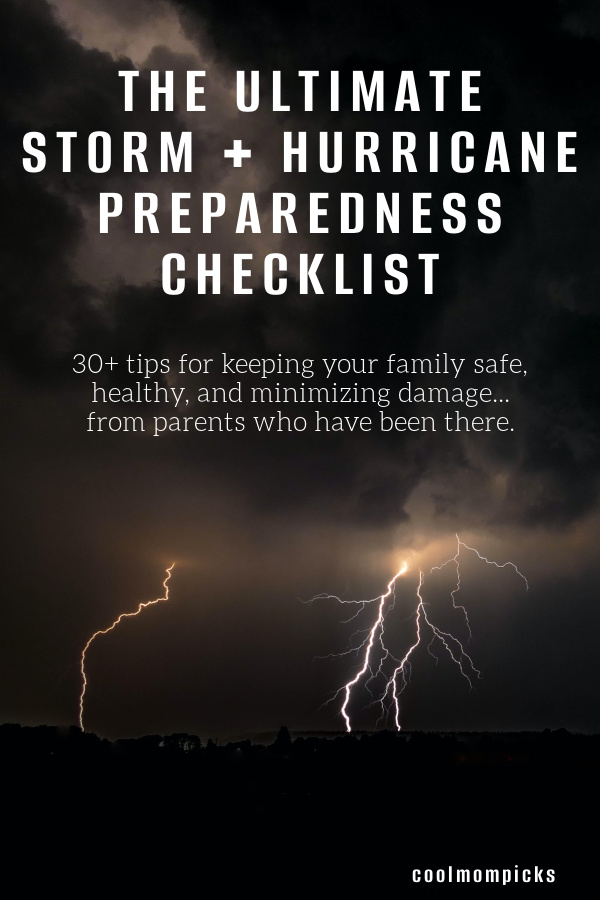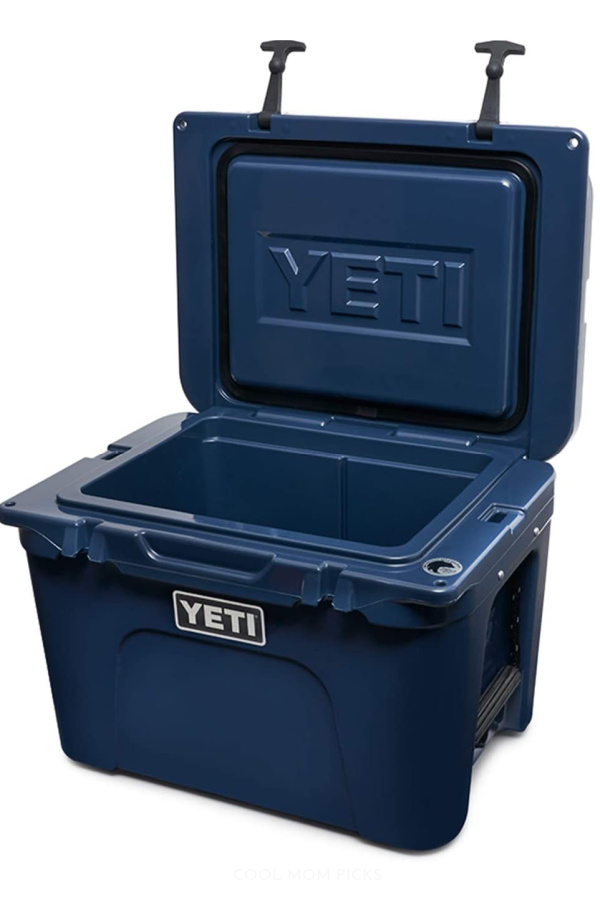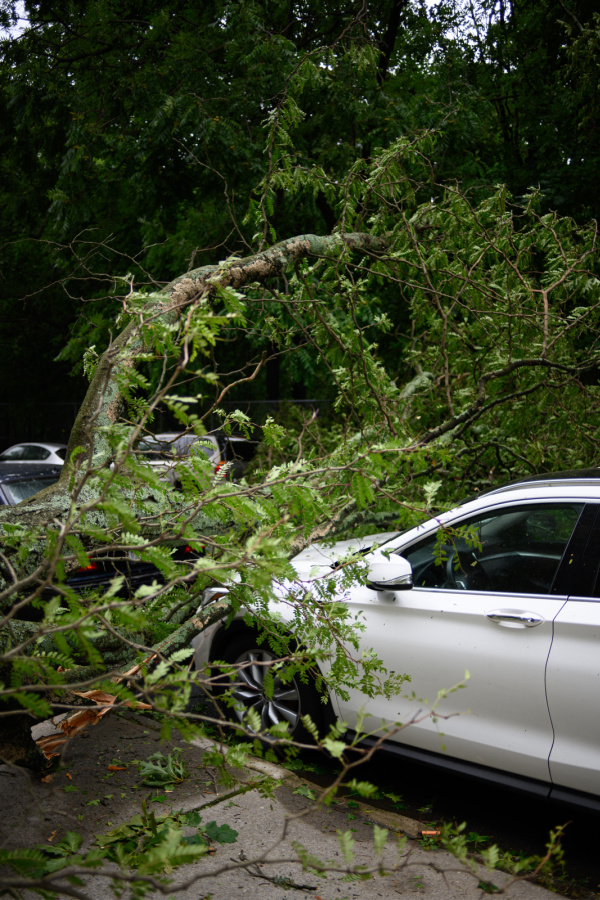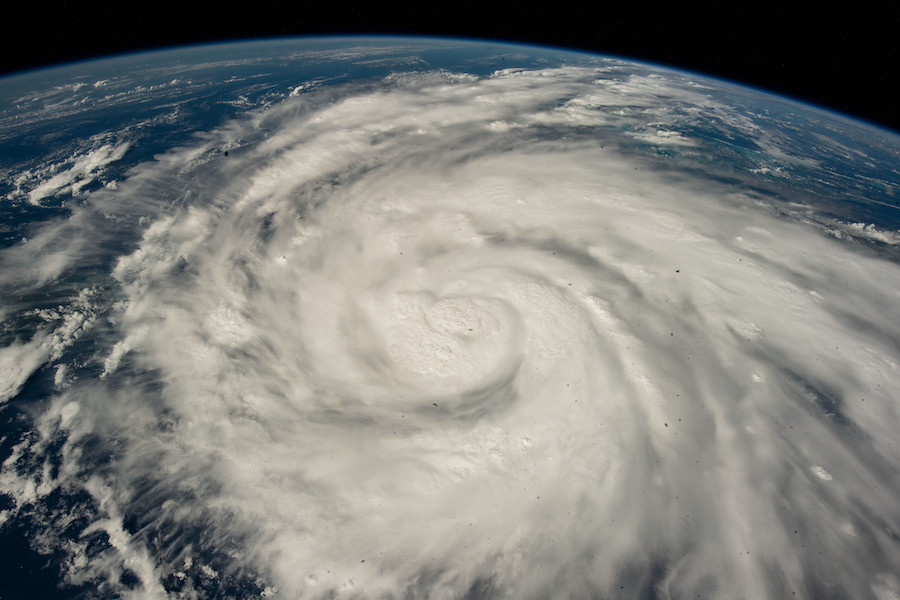As Puerto Rico is still feeling the results of last week’s Hurricane Fiona (and can still use our aid and support) we’re now turning our concern to friends in the path of Hurricane Ian right now. And we know a lot of you are looking for tips to help get you prepared for hurricanes and keep you safe, especially since this won’t be the last big hurricane of the season.
First off, we hope that those of you in the evacuation zone are finding safer ground, and that everyone in the area is taking all the precautions — better to complain after that it was “no big deal” than to risk sticking out what could be an incredibly dangerous storm.
In the past, we’ve described some helpful storm preparation tech tips to keep you safe during a hurricane or other natural event that are definitely worth checking out. Should you lose power but not need to evacuate, it’s also worth visiting our post on 35 tips for preparing to lose power — and what to do after it happens, along with our Cool Mom Eats post about what’s safe to eat after losing power.
But in an effort to provide a more comprehensive to-do list for worst-case scenarios, I’m reposting this outstanding list of tips first shared across Facebook and updated over the years.
This post has been updated for 2022
Related: How to talk to kids about tragedy and natural disaster: Helpful tips and resources.

I will note that this hurricane preparedness list doesn’t seem like it was created by someone with young children, so by all means, adapt it for your own family situation. Also, not all of these may be necessary or relevant to you, but it can’t hurt to go through them all so you can make decisions about storm preparedness that are best for you and your family.
Top photo: NASA Johnson (@nasa2explore) via Creative Commons License NOAA NWS National Hurricane Center
Graphic photo: Luka Vovk on Unsplash
This post contains some affiliate links which help support our work at no additional cost to you.
Tips for getting prepared and staying safe in a hurricane or storm
1. Charge any device that provides light or can help you contact others. That includes laptops, tablets, cameras, rechargeable flashlights, even old phones which can still be used for for their flashlights — and even for dialing 911 if they have a SIM card. Of course charge all portable batteries as well.
2. Wash all trash cans, big and small, and fill with water for flushing toilets. Line outdoor trash cans with trash bags, fill with water and store in the garage. You can add bleach to sterilize.
3. Fill every tub and sink with water. Cover sinks with plastic wrap to keep the basins from collecting dust. Fill your washing machine and leave the lid up to store water.
4. Fill old empty water bottles and other clean containers with water and keep near sinks for washing hands. Store water-filled trash cans next to toilets for flushing.
5. Fill every reusable container with water and store as many in the freezer as you can fit. These will help keep food cold longer and serve as a backup water supply should you need it. Estimate about a gallon of water per day — per person.
6. Fill drinking cups with water and cover with plastic wrap, and store many as possible in the fridge without filling it up. The rest you can store on the counter, which you can use first before any water bottles are opened. Ice is impossible to find after a storm.
Tip: One very smart trick is to freeze a cup of water, and place a coin on top of the plastic wrap or ice after it is frozen. This will help you gauge the freezer temperature if the power goes out — if the coin sinks down into the cup or falls into the water, the freezer has thawed out (even if you can’t tell from looking at the food) and most food will likely need to be thrown away.
7. Do a quick pantry and refrigerator check, tossing any expiring food. It will also help you reserve some fridge space for storing tap water, though do keep your sealed water bottles on the counter.
While you’re at it, keep an insulated cooler (whatever you’d use for a tailgate, picnic, or backyard BBQ is fine) and keep key refrigerated items in there, especially snacks for kids — cheese sticks, yogurts, milk or juice, and so on. This way the kids can grab food without needing to open the fridge. You can add some frozen veggie packs or ice packs to help keep the food at temperature.

8. Cook any meat or other perishable foods in advance, of course if you have lots of time to prepare. You can always freeze cooked food, and certainly cooked meat will stay good longer than raw meaty. Also hard boil eggs for snacks for first day without power. (Note that the American Egg Board suggests hard-boiled eggs last for one week refrigerated, but only a few hours without refrigeration.) Also stock up on non-perishable canned goods and foods — and be sure you have a manual can opener! That electric one won’t be so handy without power.
PS Make sure you’re well-hydrated before the storm hits — drink water, and if you’re prone to dehydration, avoid salty foods and alcohol. (Sorry!) Fruits and veggies are a better choice.
9. Wash all dirty clothes and bed sheets if you can. Without air conditioning, dirty items will smell, you’ll sweat more, and you may want to change clothes more often. Also consider showering or bathing the kids just before the storm is scheduled to hit.
10. Do some essential cleaning: Prioritize cat litter boxes, and empty all trash cans in the house including bathrooms. Mop floors and vacuum. Remove anything that will cause an odor when your power is out. If you don’t have a trash day pickup before the storm, find a dumpster. Consider scrubbing your bathrooms as well.
11. Run your dishwasher, or hand-wash your dirty dishes — you don’t want to risk having a dishwasher full of smelly dishes. Plus you’ll want every available clean container for water.
12. Write down essential numbers, and have photos of all important documents on your phone as backup. (You should have this anyway — to be extra safe, you can save them in a locked Notes app note, or in a secure password app like 1Password.
In case your phone dies, FEMA recommends writing down:
-family and friends contacts
-shelter info
-insurance info
-your local assistance line (in FL the Florida State Assistance Line is 800-342-2557)
13. Bring in any yard decor or toys, and secure anything that may fly around, including gates. Bring in hoses, potted plants, door mats, patio furniture, umbrellas and grills. Even if it seems like it’s big and heavy, it can definitely do damage in heavy winds.
14. Gather all candles, flashlights, lighters, matches, batteries and keep them accessible.
15. Gather everything you own that is important and necessary in a go-bag, like a backpack or small file box that is easy to grab. This means in addition to phone, charger, cords, be sure to include your wallet with ID, passport, birth certificate and other important documents, which you should keep in sealed plastic baggies.
Especially if you have younger kids, include hand sanitizer, snacks for the kids, toys, books, and a deck of cards to keep them engaged — and lots of extra plastic bags. You can never have too many extra plastic bags soon hand! Let your kids each pack their own small bag as well, with their choice of snacks, toys, and a lovey or special stuffed animal. It will help them feel more empowered and prepared.
17. Don’t forget medications! Most insurance companies allow for two emergency refills per year (like when a State of Emergency is officially declared by the local or federal government) so grab extra if you can. You can also research your insurance company’s “drug exception process.”
18. Make sure you have cash on hand. If power goes out, no ATMs will be available, credit card machines go down, and shops that do happen to be open may only be accepting cash. Wireless pay may work, but not if phones are down.
19. Gas up your car! Also have a spare gas container for your generator or for your car when you run out. And be sure to have car adapters for your electronics — they may be your only way to charge devices if you lose power in your home.
And of course, if you have the ability to park your car in a garage instead of on the street or in the driveway, do it!

Photo by Michael Jin on Unsplash
20. If you use them, fill your propane tanks for heating soup, boiling water, making coffee, and cooking off meat. Grab an extra, if possible. Be sure it’s stored safely!
21. Make sure your laptop and data is backed up. However if the storm hits, there will be power surges during and after the storm and you don’t want to lose data.
22.. If you have pets, stock up on pet food and fill up bowls of water for pets.
22. Buy Clorox Disinfecting Wipes in bulk (or similar) for cleaning if there is no power. If you have kids — or even if you don’t — pre-moistened baby wipes are a great idea too to keep by the toilets and affordable to buy in bulk. You can’t have too many.
24. You may also want facial cleansing cloths. Just be sure not to flush any of them!
25. Designate an “emergency safe place” for the family, such as a closet under the stairs. Store any essential items you’ll need in that location for the brunt of the storm — and consider that basements may flood. You may be better off choosing a spot above ground.
26. Make sure kids are familiar with any emergency plans or escape routes — not to scare them, but to make them feel more confident and prepared.
27. If you’re near an evacuation area, consider keeping a small suitcase in your car should you decide last minute that you need to go. (This is where that go-bag also comes in handy.) Also keep at least one gallon jug of water in your car; it will still be there if you don’t evacuate and is a good idea. Also remember to pack enough water for pets.
28. Speaking of which, please remember to take your pets with you!
29. Check on family members — and don’t forget elderly neighbors.
30. Consider rearranging your living area or entrance area to give you clear, easy escape routes. Even if that means temporarily moving furniture to one side.
31. One of our top tech tips is to take photos and video of your house and contents should you need it for insurance purposes to document proof of ownership. Just walk room to room, and be sure to open cabinets, drawers and closets. Don’t rely on memory! (That’s in addition to the photos of your important documents, which we mentioned above.)
32. Finally, if there’s anything that you want to try and preserve, but can’t take with you, seal it in a plastic bin and stash in your closed dishwasher, which should make it water-tight. But of course, take anything that’s important or irreplaceable with you.
Yes, I know this is a very detailed list. And you may not want to spend your time (or be able to spend your time) scrubbing down your bathroom or doing loads of laundry, particularly if you’ve got kids to take care of. So don’t panic if you can’t get to every single item here. Just use this as a helpful set of guidelines to allow you to pick and choose what you think will best help you.
Most of all, stay safe everyone!
(If you have any tips, please feel free to share them in comments for our readers. And if you created this list to begin with, let us know so we can give you credit!)




Another tip: if you have a large cooler, fill it with ice packs/ice and a few fridge necessities (milk and cheesesticks…aka my children’s life source.) Then when the power goes out, you can work from the cooler instead of opening the fridge at all/as much.
Fantastic tip, thank you so much!